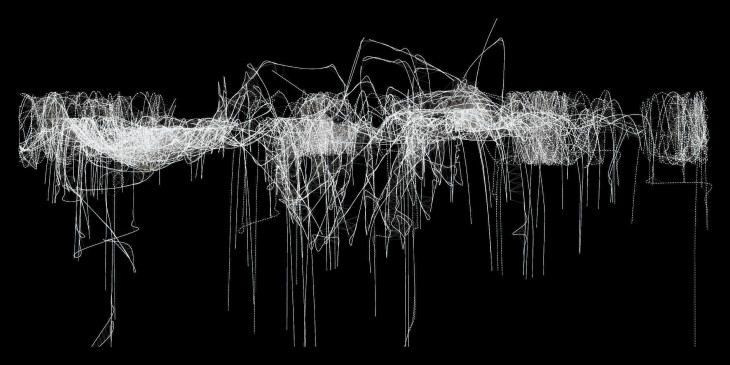Case Study: Sendai Mediatheque l Toyo İto, Matsuro Sasaki
Reading Text: Emergence l Steven Johnson
Steven Johnson explains the ‘Emergence’ in a very good way in terms of understanding the relation between architecture and the city. He is defining the complex system in various scales(from micro scale to macro scale) with comparing the ants, body cells and cities and he takes our attention with the swarm logic of ants’ colony.
Swarm intelligence is the collective decentralized behavior. It is a system which is formed by simple individuals and it is transforming to complexity by interacting with each individuals and surroundings. For instance, ants manage to do their tasks for finding food and building shelter. But there is no reason, no logic about what they are doing. It is impossible to do it by itself; they are really successful when they work together. They get information from their surroundings and neighbors, in that way they do their tasks. This is the result of interaction which means it becomes ant colony and this example is also shows how ‘local information can develop global wisdom’. Also our body cells are precise example which proves the same swarm logic by creating the whole body with those simple cells.
According to the learning form ground level, there are 5 main topics to point out:
More is different: The more simple elements in numbers, can work more efficiently compared to 1 or 2 elements. For instance, only large amount of ants can create the colony.
Ignorance is useful: The simplicity is crucial for creating complexity. Learning from ants, each ant do only one task and they do not even know why they do.
Encourage random encounters: Different information and situations can create complexity in large scale. Ants behave individually and do their random unplanned tasks. They can adapt in any condition and they can change their tasks.
Look for patterns in the signs: As it is understandable, it is better to follow signs which priors leave. This is way to improve globally. To give an example from ants, they do not talk to each other. They work with their pheromones to find food and create path to build shelter.
Pay attention to your neighbors: Last but not least, this is how the complexity works; sharing information and interaction. Ants see the neighbors and change their tasks. Because they can not survive on their own.
Ultimately, this is where everything is getting clear. Cities bring minds together and the similar swarm logic of ants can be thought in human scale. Cities exist with their neighborhoods. If interaction needs a place, Steven Johnson points out the sidewalks of the city. It is a place that gives us a chance to get/share information and interaction with others (fluidity and continuity place for information). We are all individuals living randomly, but we are providing the exact amount of local interactions to achieve global wisdom. In other words, we are all a part of the whole complex system. By individually sharing information affects the whole complexity. As a result, Emergence is the ability to get and respond the information according to needs of global wisdom.
After analyzing Johnson’s examples and also Toyo Ito’s mediatheque, they changed my way of thinking about the complexity. Now I can say that also complexity can become from a simple element. I am very intrigued with the fact that there are so many patterns in our environment which has similar patterns in our lives. I would like to research about these patterns. It would great to learn how we can learn more from the micro systems in nature and implement them to our macro system. In that case learning more from nature, helps me more about understanding the advanced architecture.

